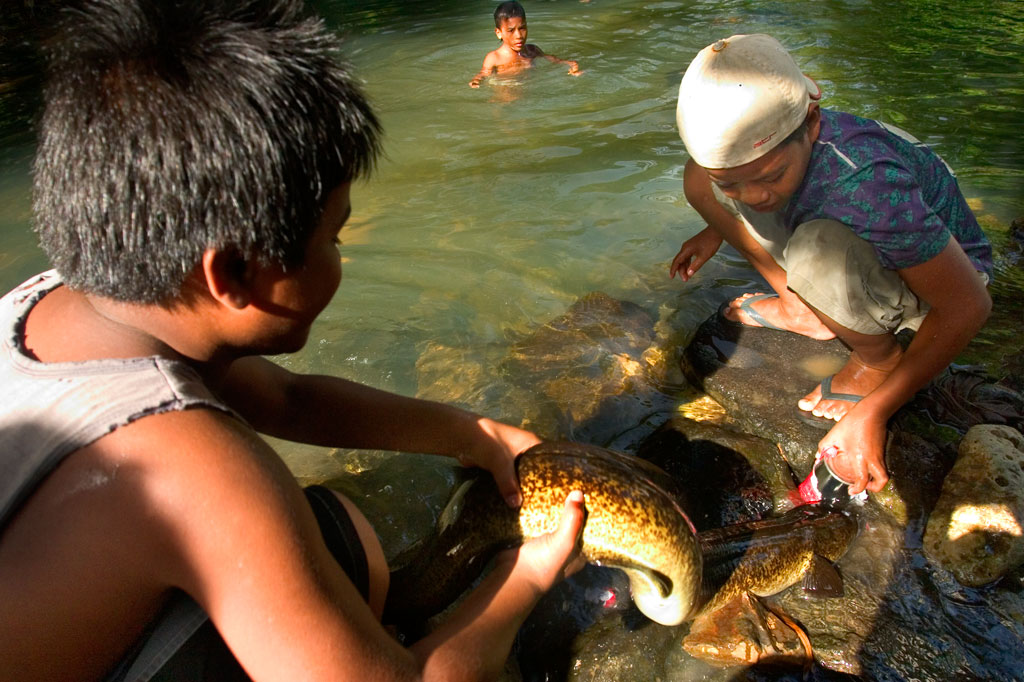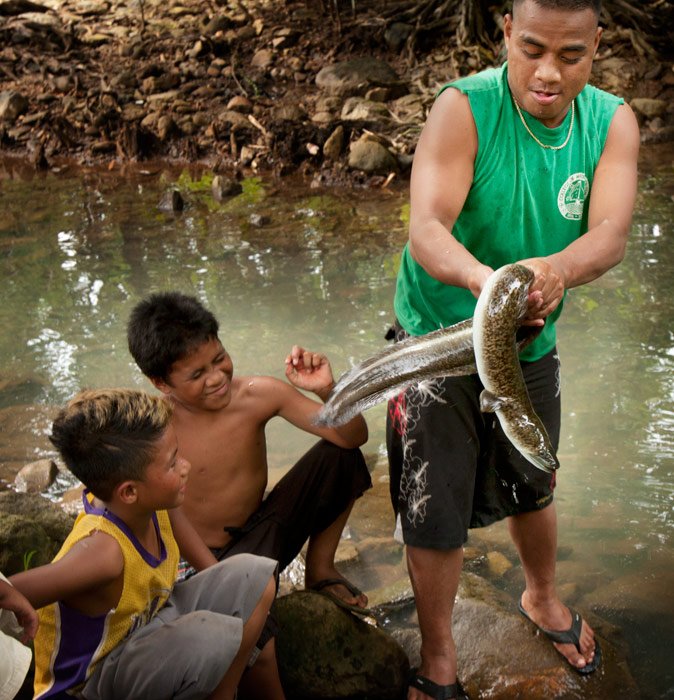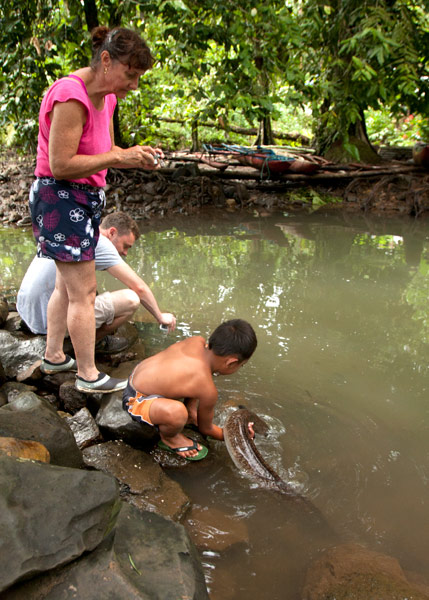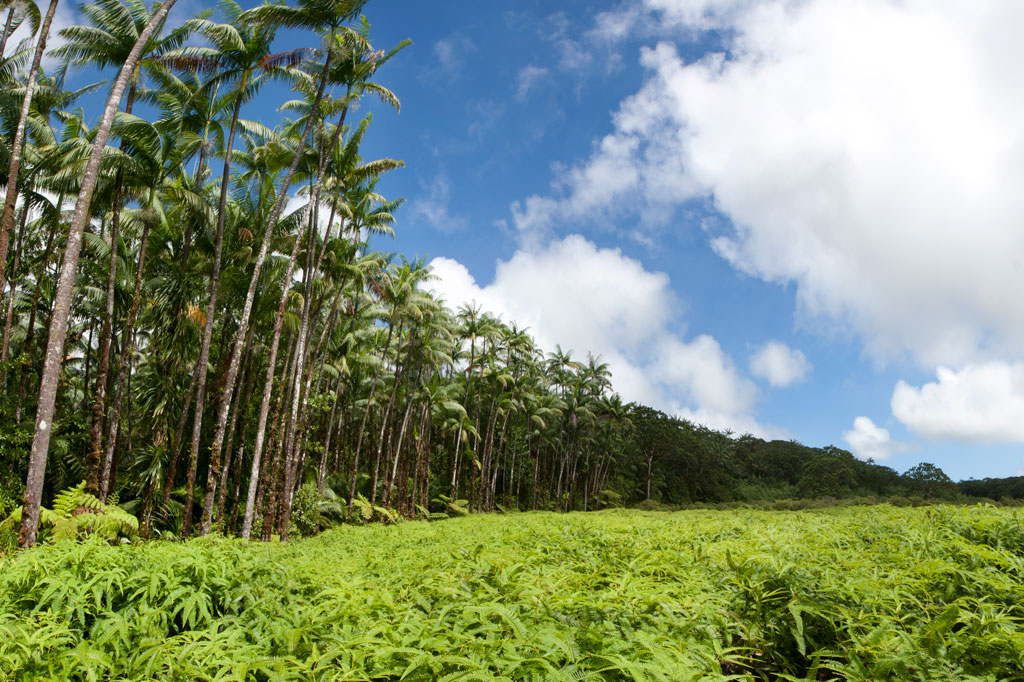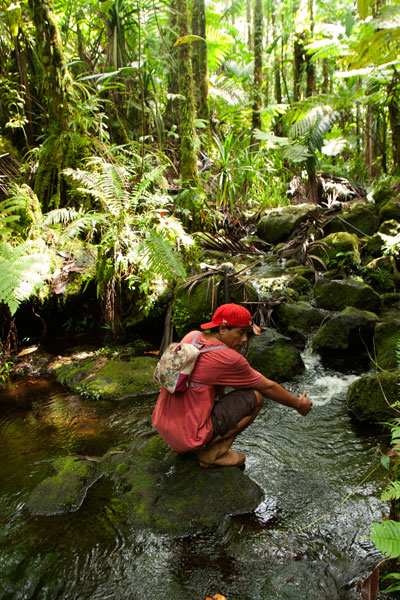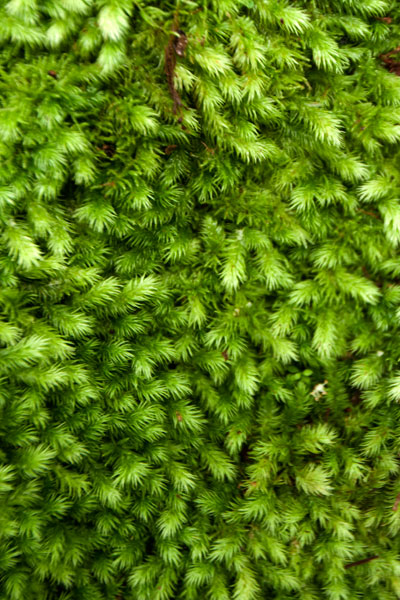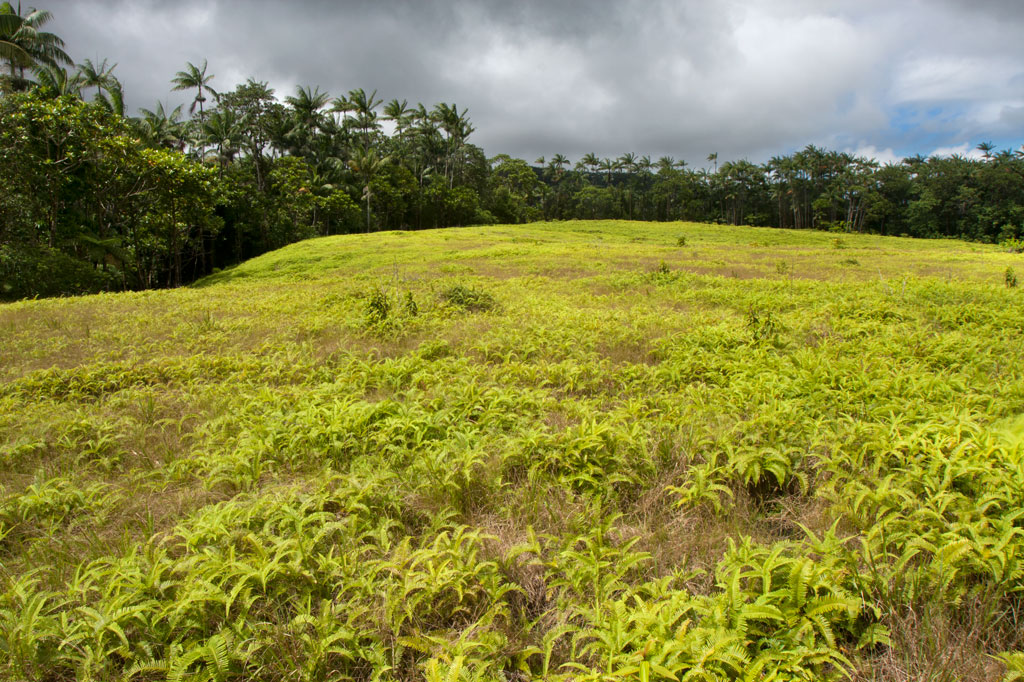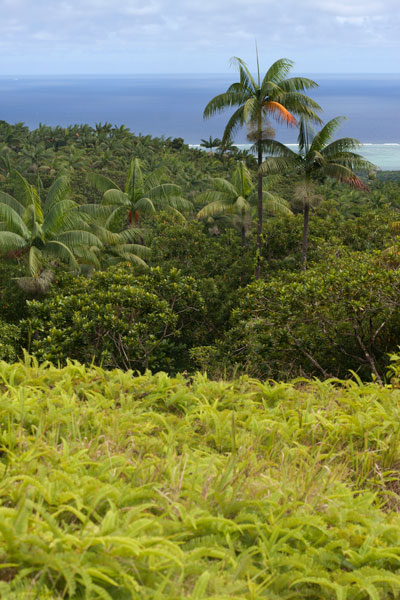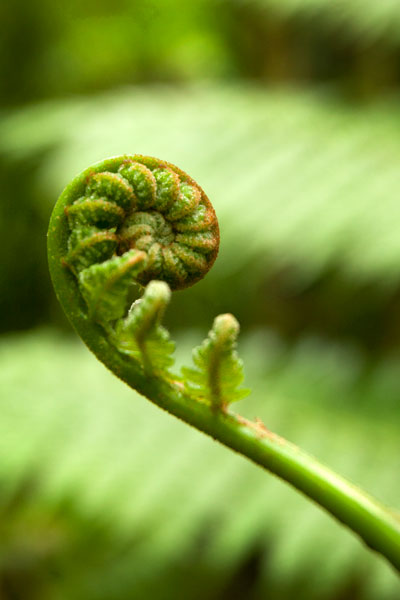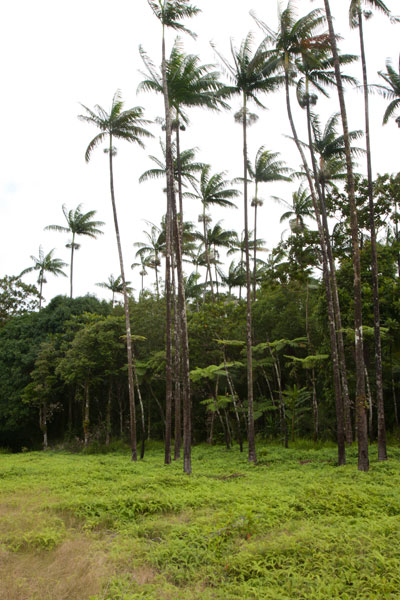Waterfalls and mountains can be visited in many places, but the experience to be had at Pilen Seleur in Pwudoi is uniquely Pohnpeian. River pools on either side of the road are home to scores of huge Marbled Eels — also called Giant Mottled Eels (Anguilla marmorata). The eels are sacred on Pohnpei and figure prominently in local mythology. Members of the Lasialap (Great Eel Clan) consider the mottled beasts to be their extended family, protecting and feeding them (Pohnpeians have a taboo on eating freshwater eels, though they are eaten in nearby Kosrae). Visitors can walk down to either pool and watch local men and boys stroke the eels, pick them up, or entice them with cans of mackerel to slither entirely out of the water. Some of the creatures are more than a meter long. You can even try handling one yourself; don’t worry — the eels are quite docile and rarely bite.
The pool on the west side of the road is large, deep, and picturesque. It’s a popular swimming spot for the young members of the family living there. There tend to be larger eels at this spot, but because the water gets waist-deep pretty quick, you can’t easily wade in. The pool on the east side is small and rarely more than a foot deep — it’s the best place if you’re interested in trying to pick up an eel yourself. Treat the beasts with respect and care.
- Plan for 30 min to 1 hour at the location. The families living next to each of the two pools charge $3.00 per person. You’ll also want to purchase a can or two of mackerel at a nearby store to feed the sinuous creatures.
More About the Giant Mottled Eel
The species of eel found on Pohnpei has a wide distribution and exists in tropical environments ranging from East Africa to French Polynesia. It’s also found in southern Japan and Taiwan (where it is endangered). Young eels usually have yellowish or light brown backs and become darker as they age. The largest eels are dark brown mottled with black with cream-colored bellies. They have tiny rows of teeth and protruding lower jaws. Mature females have been known to grow up to 2 meters (6.5 ft) in length.
Mottled eels have two distinct phases to their life-cycle. After spending as long as 20 years in freshwater streams or estuaries, the eels leave their homes and migrate westward across the Pacific to an area in the open ocean west of the Mariana Islands (in the case of Pohnpei’s eels, this is a distance of more than 1,600 kilometers / 990 miles). There they breed, lay eggs, and die. After hatching, juveniles journey to find land, where they swim up rivers and streams and establish themselves in deep pools.


